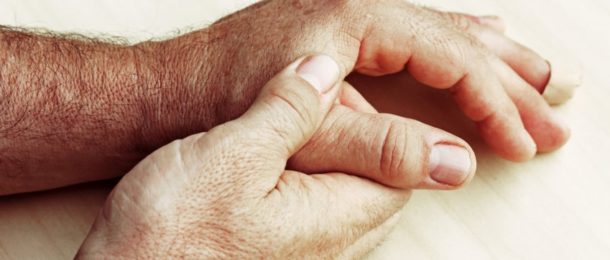Migratory Arthritis: Causes, Symptoms, and Treatment Options

There are many types of arthritis that people may suffer from, but one of the least well-known is migratory arthritis. To fully understand this condition, we’ll explore the causes, symptoms, and treatment options.
A joint is a point where two or more bones meet. The space between each joint can swell or become inflamed. This is called arthritis and it can be very painful.
Because there are 360 joints in the human body, that is 360 places for arthritis to appear. Unfortunately, pain from arthritis is very common.
According to the Center for Disease Control, by the year 2040, 78 million American adults are expected to be diagnosed with some form of arthritis. This number is concerning since arthritis is a leading cause for disability in the United States.
Just when you think having arthritis pain in one joint is bad enough, researchers have learned that arthritis can travel from one joint to another.
This is called migratory arthritis.
What is Migratory Arthritis?
The word “migratory” suggests movement of some kind. And that is exactly what it means in relation to arthritis.
For instance, the joint in your knee may be inflamed and causing pain. After a while, you may notice that the joint in your ankle is feeling pain also. This can mean your arthritis has migrated, or traveled, from your knee to your ankle.
Your arthritis can spread from one joint to other joints in your body, even if the joint that was initially swollen and inflamed has begun to feel better.
What Causes Migratory Arthritis?
When arthritis spreads, it may be because of an underlying disease or ailment. Inflammatory bowel disease and hepatitis B and C are common causes of this type of arthritis.
In addition, migratory arthritis is most often found in gout, osteoarthritis, and rheumatoid arthritis.
- Gout happens when there is a crystal build-up between the joints.
- Osteoarthritis is a breakdown of cartilage that covers the bones in your joints.
- Rheumatoid arthritis occurs when you body attacks its own healthy tissues
Other Diseases Connected to Pain in Multiple Joints
Other illnesses connected to migratory arthritis include:
- Infectious arthritis
- Lupus
- Lyme’s
- Rheumatic fever
- Whipple’s disease
Infectious arthritis happens when germs enter your body and travel to a joint, and then to another joint, and another. This is like gonococcal arthritis except that the germs in these cases derive from the disease gonorrhea.
Lupus is a form of chronic inflammation in the body. It is an autoimmune disease that affects all major organs and joints. With lupus, your immune system is attacking its own healthy joints. Lupus is getting easier to diagnose but there was a time when it was difficult due to the ability of lupus to appear like other types of arthritis.
Lyme disease is another form of chronic inflammation that leads to migratory arthritis. It is caused by a bacterium carried by deer ticks. When the tick carrying the bacteria bites you, the bacteria then travels throughout your body.
This can also be caused by an injury that has not healed properly.
Symptoms of Migratory Arthritis
There are many common symptoms of this type of arthritis. No matter what the cause, symptoms can be commonly recognized.
1. Pain
Pain is typically the number one symptom associated with migratory arthritis. This, and chronic swelling. Additional symptoms can include redness in the area that is causing pain or that is swollen.
Rashes and fever can accompany arthritis.
2. Weight Changes
One symptom you may not associate with migratory arthritis right away is changes in your weight. Some people have noted losing weight without trying, while others have found it difficult to lose weight.
In fact, they have noted they gained weight even when trying to lose.
3. Fatigue
If you are feeling tired more often than before, this too could be a symptom of this type arthritis. Fatigue is a common symptom with all types of arthritis.
Fatigue is something that begins to interfere with your daily tasks because you do not have the energy to complete them.
4. Joint Stiffness
When one or multiple joints stiffen and it becomes to affect your range of motion, you may be experiencing migratory arthritis. This may even cause you to limp or use your joints differently to avoid the pain.
For instance, if the joint in your right ankle has arthritis, you may try to avoid using that ankle and put more pressure on the ankle without arthritis.
Doing so can change the way you walk.
5. Sadness
Finally, it is important to note that any type of arthritis can affect your mental health as well as your physical health.
If you notice you are having symptoms of sadness, excessive crying, and unmerited anxiety for no reason, it could be due to this arthritis.
After all, if you feel bad in any area of your body, it can become the focus of your thoughts and feelings until you receive treatment.
Migratory Arthritis Treatment
Receiving treatment as early as you can is the best solution for healing any ailment. Unfortunately, it is not always that easy to do, especially with conditions like arthritis that can be misdiagnosed in the beginning stages.
To catch it early, though, start documenting any symptoms you have, whether you think they are meaningful or not, and share this information with your doctor.
These symptoms could be used later to help in diagnosing your pain and developing a treatment plan.
Even if you aren’t documenting, there are great treatments available. Your pain management clinic specialist will be able to assess your needs and offer you the treatment most fitting.
1. Physical Exams
Your doctor will complete a physical exam to check the alignment of your joints, the tenderness of the area surrounding your joints, and your range of motion.
Treatments can include simple over the counter medications that reduce inflammation. Or, doctors may prescribe topical creams and lotions. If those do not work, you can discuss prescription pain medications with your doctor.
2. Steroid Injections
Furthermore, joint injections or medial branch blocks that release a corticosteroid into the joint area has given many people relief from pain.
The first step in getting help is to contact your pain management specialist. Together, you can develop a plan to treat your symptoms and prevent further migrations.
5 Healthy Aging Tips to Help You Make The Most of Your Senior Years

When you’re a senior looking to improve your quality of life, there’s no better solution than improving your physical and mental health. Health and wellness influences all other aspects of life, which is why finding easy ways to boost yours is the key to being happier in retirement. This solution can be fairly simple if you know the right steps to take. So, keep reading our healthy aging tips for some insights into sustaining a healthy quality of life and increasing your happiness as a senior.
1. Be Sure to Schedule Regular Wellness Exams
Preventative care is one of the best ways you can stay in control of your quality of life as you age. If you haven’t already, make an appointment for a wellness exam with your preferred healthcare provider.
Seniors who are on Medicare can use their annual wellness visit to head off potentially serious health conditions before they get worse, as well as obtain professional advice as to any diet, lifestyle, or wellness changes that can be made to improve overall physical and mental health. This is also a good time to set up a schedule for future wellness visits.
2. Take Steps to Relieve or Reduce Chronic Pain
If you are living with chronic pain, you may also be living with a lower quality of life. Pain can impact so many different aspects of your well-being aside from physical comfort; your mental health, relationships, and overall outlook on life can all be severely affected by pain.
So, look for help with pain conditions, such as these resources from Comprehensive Pain Management Center, if you really want to take back control of your health and happiness. Certain conditions require different approaches to relieve pain, so make sure you drill down into these resources to find the perfect pain management solution for you.
3. Eat Foods That Will Preserve Your Quality of Life
These healthy aging tips include self-care when it comes to meals. You can definitely ask your doctor for diet tips during your annual wellness exam, but it also helps to have some food knowledge of your own. You may find that following certain top diets, such as the DASH or Mediterranean diet, helps you:
- Maintain a healthy weight
- Manage brain function
- Improves your odds of living a long, healthy life
That’s because these diets are heavy on whole foods that benefit your brain and body while being light on foods that hinder your health, such as red meats and processed foods. Check with your doctor before following these meals plans, and remember to make changes slowly to help them stick.
4. Make Regular Physical Activity a Major Priority
One of the lifestyles changes your doctor will likely suggest is regular physical exercise. For seniors, staying active is important for a variety of reasons. You can maintain more muscle mass if you work strength training into your routine, while cardio can help you maintain better mental health.
If you suffer from chronic pain, exercises such as swimming can provide relief from your symptoms as well. Aim to add these exercises to your routine a few times a week and you will begin to see improvements to your physical and mental health.
5. Address Any Habits or Health Issues Affecting Sleep
When thinking about healthy aging tips, there is one that is the most important.
One aspect that impacts overall quality of life, health, and pain management is sleep. Poor sleep quality can increase your risk for serious diseases, including Alzheimer’s, and can also lead to worsened mental health issues.
When you live with chronic pain, not getting enough sleep can also have negative impacts, such as making pain symptoms worse by altering the way your brain responds to pain. So, how can you make sure you’re getting the sleep you need to age well? Your nighttime habits can have the biggest effect on your quality of sleep, so make sure you are relaxing enough before bed and try to avoid screens several hours before.
Conclusion
Quality of life is important at any age, but it is especially important for seniors. So, improve yours by taking more control over your mind and body with these healthy aging tips. Incorporate the habits that will keep you healthy, and take the necessary steps that will keep you happy as well. Because, contrary to popular belief, the years ahead of you really can be the best yet.
This article was written by personal trainer Jason Lewis. Find more of his work at strongwell.com

